The Iu-Mien, Sacramento’s spirited but little-known refugee community, is starting to find its voice
A rolling echo rumbles under the call of what sounds like a songbird. People in the auditorium turn as the musician appears, conjuring a long, soaring cry from his pine-and-copper mountain flute.
Then he leads a trio of men through the gathering. Their music gets louder. It’s a melody that is completely unknown to the streets outside. It’s the sound of a people whose memories have roamed countries, continents and one vast ocean.
More than 30 years ago, a hill tribe called the Iu-Mien began arriving in South Sacramento. They were escaping the cost of supporting U.S. troops in the chaos of the Vietnam War. The capital city soon became home to largest community of Iu-Mien anywhere outside Asia, now about 15,000 strong. These refugees had migrated long distances over 10 centuries, but now they found a place to end their wandering.
Yet, despite their love for their new home, these survivors make up one of the smallest and least-known threads of Sacramento’s thriving cultural fabric.
Now, the Iu-Mien are beginning to tell their own story as part of a mission to keep their heritage intact. Their customs may have survived wars, revolutions and upheavals, but in Sacramento they face a different threat: assimilation into a country where the Iu-Min have been quietly contributing.
As the musicians keep moving through the gathering, it’s the younger faces in the audience who must save the community’s traditions and identity. Only recently has their generation brought the Iu-Mien experience into the medical profession, Sacramento City Hall and even the state Capitol. That’s allowed them to give the community a voice. The new generation also hopes that Sacramentans will decide it’s finally time to meet the Iu-Mien.
Memories from the earth
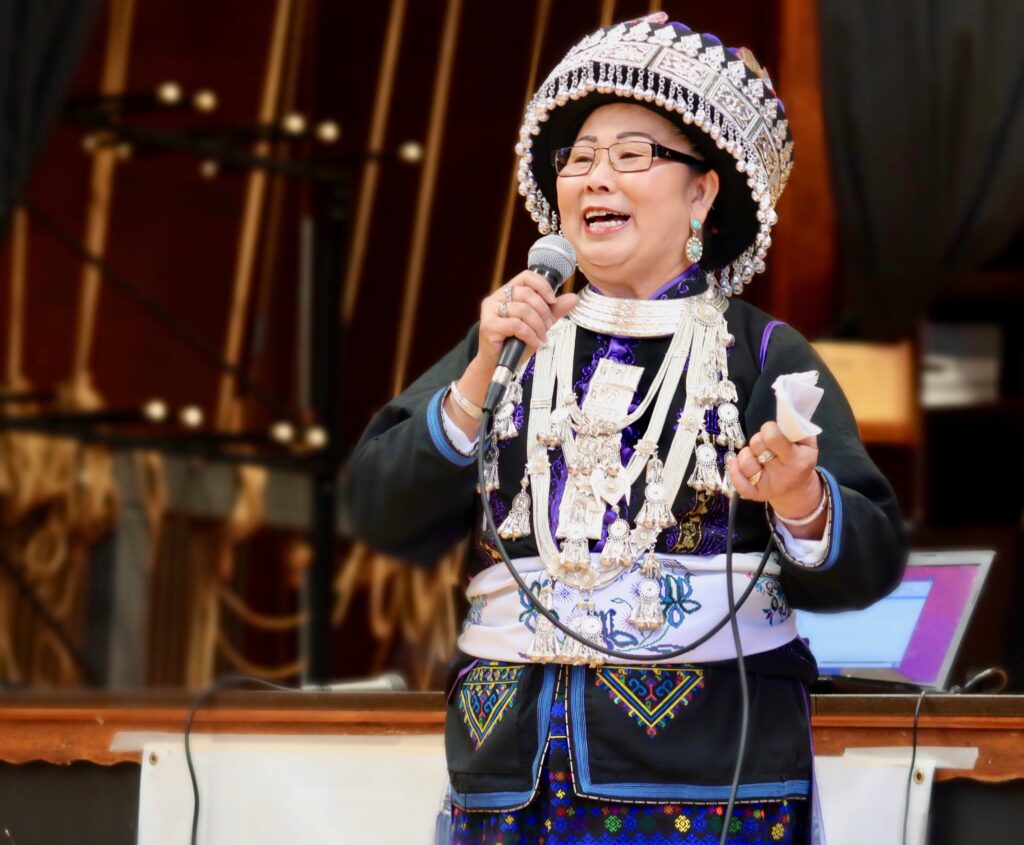
There’s a graceful swaying to the way the elders dance, men and women moving in pairs, their ritual garbs swinging as they follow the call of the mountain flute. The men pretend to stir the ground with wooden dowels. The women pretend to make sprinkling motions over their shoulders. Each pair takes elegant steps to the side, as if kicking dirt on a broken field. They’re reenacting rice-planting techniques they once used in the hills of Laos, the men hoeing the land, the women seeding the soil. This fusion of dance and storytelling was part of a Iu-Mien Lunar New Year’s celebration at the Fruitridge Collaborative on Feb. 2.
Looking on was James Saeteurn, who glanced at reactions of elders surrounding him. “It helps them remember,” he says. “For the older people watching, they grew up around that planting; but now they haven’t seen it for 30 years.”
In Southeast Asia, the Iu-Mien were masters of a slash-and-burn method of subsistence farming they learned over centuries of being on the move. A distinct ethnic group with roots in southern China, it’s generally believed the Iu-Mien were forced out of China in the 17th century by imperial persecution. They began sojourning into Vietnam, Laos and Thailand. In the 1960s, the Iu-Mien who remained in China fled to Laos to escape Mao Zedong’s cultural revolution. Their brush with communism may have influenced why they chose to fight alongside the Hmong in the “secret army” led by the Central Intelligence Agency. That force of hill tribes in Laos battled North Vietnamese soldiers and Viet Cong guerillas on the Ho Chi Minh Trail. The Iu-Mien also provided surveillance to American fighter planes and rescued downed pilots stranded in the jungle.
Similar to South Vietnamese soldiers and the Hmong clans, the Iu-Mien faced devastating consequences when the United States withdrew from Southeast Asia in 1975. Fleeing a violent vendetta from the communist government in Laos, most spent several years inside crowded Thai refugee camps where hunger was extreme.
The Iu-Mien arrived in Sacramento in one burst of migration between 1979 and 1983. James Saeteurn, a 36-year-old program analyst, says his parents’ generation was immediately drawn to the area’s agriculture. Some quickly found work in the region’s strawberry fields and vegetable farms. The Iu-Mien also became deeply involved in urban farming, including the expansive community garden in Lemon Hill. Many families tend their own elaborate gardens, growing basil, mint, cilantro, tomatoes, chili peppers, lemon grass and eggplant—all staples to traditional dishes such as Tum Som (a spicy papaya salad) or Ka-Soy (an herb and rice noodle broth).
There’s a direct thread between Sacramento’s famed farmers markets and the dance the elders performed on stage—this tribute to their lost, Laotian rice fields. After the audience gave them a loud round of applause, Chai Choy Saeteurn stood before them to recite a chant from Iu-Mien folklore.
Ritual songs and blessings are just part of how the Iu-Mien stay connected to their past. Another way is handling urban livestock. Their festive wedding ceremonies include slaughtering live pigs and chickens at the groom’s home, with his family using the fresh meat to prepare dishes such as steamed pork, chicken larb gai, fried pork belly and pig’s blood gelatin.
“We were the original farm-to-fork here,” James Saeteurn says with a laugh. “But it was more like backyard-to-kitchen table.”
Over the years, some Iu-Mien have transitioned from field laborers to independent farm owners, a few even supplying strawberries to national outfits such as Dole Food Company. James Saeteurn says there’s no denying his people have spent three decades becoming an integral part of the Golden State’s agricultural story.
“We have an extremely rich history here,” he stresses. “We’ve contributed to a lot.”
Lessons on a new life

Koy Saeteurn walks through the cold morning light toward the front of City Hall. She’s the first Iu-Mien-American to hold a high-level position within its bustling offices, and she says the reason she’s so involved in politics has everything to do with a memory never far from her heart.
Her parents, Mahn Hin and Yooncho Saeteurn, met and fell in love in Thailand’s Nam Yao refugee camp. Mahn Hin barely made it there alive. When she was 16, she fled through the jungles of Laos, barefoot and running with a lone sack of rice on her back. She and her fellow villagers were shot at by Communist soldiers and were trying to avoid hidden landmines in the forest and nighttime military patrols along the river. Mahn Hin’s brother-in-law was hit by shrapnel and later died. The violence of the secret war, and the viciousness of the Pathet Lao’s purge that followed, would never be forgotten by the Iu-Mien.
Growing up, Koy Saeteurn noticed her mother would often cry, but rarely wanted to talk about what happened in the jungle. That was hard for her to watch, but the memory that stays with her the most was when she was 5 and Mahn Hin was working in a strawberry field in the Central Valley. Sitting in a van watching her mother toil under the relentless sun, she pieced together that her mom was paid partly by how much the crates of strawberries weighed. Koy Saeteurn remembers pouring sand into the crates, hoping her mom wouldn’t have to work so hard. Mahn Hin scolded her about it, but the little girl was determined to help. It didn’t matter since the sand kept pouring through holes in the bottom of the crate.
For Koy Saeteurn, the futility of the act came to symbolize a larger hopelessness refugees experience when first trying to rebuild their lives. The family didn’t have child care or health care. The few toys at Christmas came from police officers dressed as Santa Claus. In her mind, all those feelings of uncertainty still swirl around the image of sand falling through a strawberry crate.
“I was trying to take that weight off my mom’s shoulders, the pressure to provide for her family,” Koy Saeteurn recalls, brushing back tears. “It was a key memory for me, because it was a driving force …It made me want to be better, and to give back—for my mom, for my parents—and to know that their sacrifice was worth it.”
She majored in political science at UC Davis, and now works as a field representative for Sacramento City Councilman Eric Guerra, who told her about his own family’s immigrant story working in the fields. She wants to help Guerra combat local poverty.
“The community engagement piece, the advocacy piece, it’s why I love working in Sacramento,” she says. “And when the vice mayor asks me for advice … I try to answer in the shoes of little Koy on that strawberry field.”
Lately, one form of her advocacy is related to the Iu-Mien’s seeming invisibility in the Vietnam War narrative. State lawmakers recently passed Senate Bill 895, which develops new curriculum in public schools on U.S. military intervention in Southeast Asian and its fallout. Specifically, the bill ensures new generations will learn about the South Vietnamese contribution to the war, as well as how the Hmong fought in the CIA’s secret army and the geopolitical events that led to the Cambodian genocide.
Authored by then-state Senator Janet Nguyen, an Orange County Republican who was born in Vietnam, the legislation is also meant to educate Californians on how these refugee communities became such a vital part of state’s social fabric. But the bill leaves out recognizing the Laotian and Iu-Mien soldiers who fought for the United States. Koy Saeteurn and others in Sacramento’s Iu-Mien community are working with state Senator Richard Pan, a Sacramento Democrat, to fix that oversight.
Navigating the government bureaucracy has become easier for the Iu-Mien now that a new generation of professionals are active around the state Capitol, people such as Deputy Legislative Counsel Stacy Saechao. She grew up in Antelope, graduated from the University of the Pacific and has been working in the Legislature for several years. Because her position is nonpartisan, she can’t advocate for specific bills, including a fix for SB 895. She can, however, help the Iu-Mien community learn about the ins-and-outs of the legislative process.
“I do work in the arena, and I don’t know of a lot of Iu-Mien people who do,” Stacy Saechao says. “If you look at our neighborhoods in South Sacramento, in Antelope or North Highlands, the Iu-Mien like to create little villages … Giving back to family and friends, having a sense of community, those are things I like about Iu-Mien culture. There’s a sense of duty.”
The language of survival
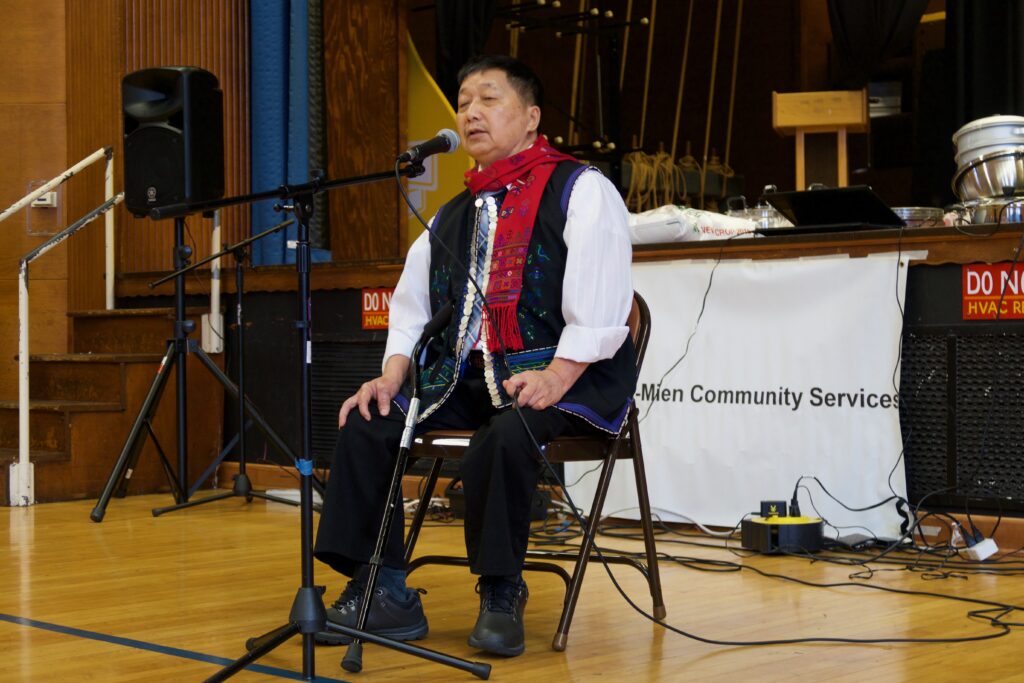
Kevin Saephan was 6 when his family woke him up in the middle of the night and told him they had to leave a small village not far from Laos’ southern border on the Mekong River. His grandmother strapped a bag of rice around his shoulders and led him by the hand into the darkness. Everyone in the village was trying to make it to Thailand before they were killed or forced into a re-programming camp.
“After the war, the people who are involved with the American soldiers—and even the people who weren’t involved—could be easily prosecuted and taken away,” Saephan remembers. “We made it to Thailand after we met a fishing boat at 4 o’clock in the morning.”
His family spent four years in the Chiang Kham refugee camp before they were given a chance to emigrate to the United States. They arrived in 1979, among the very first wave of Iu-Mien to come to Sacramento County. While he was still young enough to learn English and get through school, that path was harder for the adults. His generation could see family ties being disrupted and conflicts between children and elders.
“The kids became the main breadwinners of the family, even with the teens, because they learned the language fast,” Saephan says. “They adapted a lot quicker, so they didn’t feel like their parents had the knowledge to support them. They got into the mode of supporting themselves and surviving for themselves. Then, challenges came between the parents and the kids.”
Saephan sits in a quiet café on the border of South Sacramento. It has been a week since he spoke in front of the Iu-Mien’s Lunar New Year gathering, but the mesmerizing sound of the mountain flute still makes him smile. Its proper name in Iu-Mien is the Fanh Diqc—and there are only six people in Sacramento’s entire community left who know how to play it.
Saephan, 51, is just old enough to remember living in the Laotian hilltops where the Fanh Diqc originates. He fears that the centuries-old art form is on the verge of dying out in California. That has already happened to the Iu-Mien’s special tradition of silver-smithing. He saw these challenges coming 20 years ago when he and a handful of others set to make sure the Iu-Mien could find their place in the American melting pot without losing the unique parts of their identity.
He started working with other Iu-Mien professionals, including Chiem Seng Yaangh at the Sacramento City Unified School District, to turn a small organization called Iu-Mien Community Services into a larger nonprofit. In 2002, he became its first official board president. One of the initial programs he and Yaangh launched was the Iu-Mien Student Conference to prepare teenagers for career success while also helping parents support them, even if they didn’t speak English.
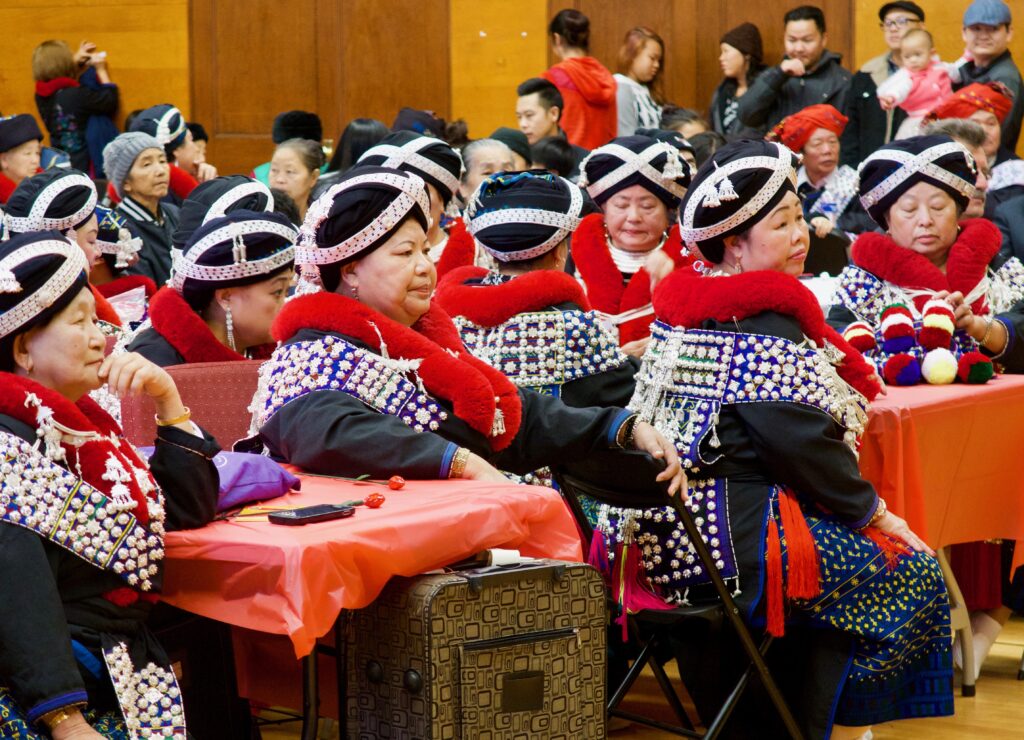
Stacy Saechao, when she was a high school student in Antelope, ditched class to attend the conference. “The [Iu-Mien] kids around North Highlands were in a different school district and weren’t set up to go,” she recalls with smile. “We lied and said everybody’s aunt had a funeral, which got us all an excused absence.”
The conference, preparing to celebrate its 20th anniversary this year, showed students that there could be real opportunities ahead of them.
Iu-Mien Community Services also runs a program for seniors to promote health and combat isolation. Board president Nai Sio Saechao, a registered nurse, says the program sometimes helps get the elders counseling for the trauma that lingers from their war and refugee experience.
“A lot of them do have isolation and depression, because they’re really just at home by themselves, especially since they used to live in villages where they were all connected,” Nai says.
But the nonprofit’s initiative with perhaps the highest stakes is its Iu-Mien language class. Very few in Sacramento under the age of 40 can speak fluently, though many special nuances of the culture are embedded in its language. The group offers free Iu-Mien classes for all ages every Monday and Tuesday in South Sacramento.
Saechao said that is a good start, but says the only real chance for the language to survive is for younger parents like herself to prioritize teaching it to their kids, insisting it be at least one of the languages spoke inside their homes.
“The classes alone can’t save it,” she said.
Saephan agrees, but is encouraged by a rising new genre of music attracting some of Sacramento’s Iu-Mien teenagers. It fuses American dance music with Iu-Mien lyrics and has inspired a number of teens to check out the language class.
For Koy Saeteurn, these concerns about the language—or where the next generation of shaman will come from—are serious issues for the community.
But, she says, these questions also show that the hardships endured by elders allowed their children and grandchildren to have new, meaningful lives in America. They’re now seizing opportunities, building rewarding careers and finding ways to save the Iu-Mien culture.
“If you think about it,” she says, “it’s literally the American dream.”
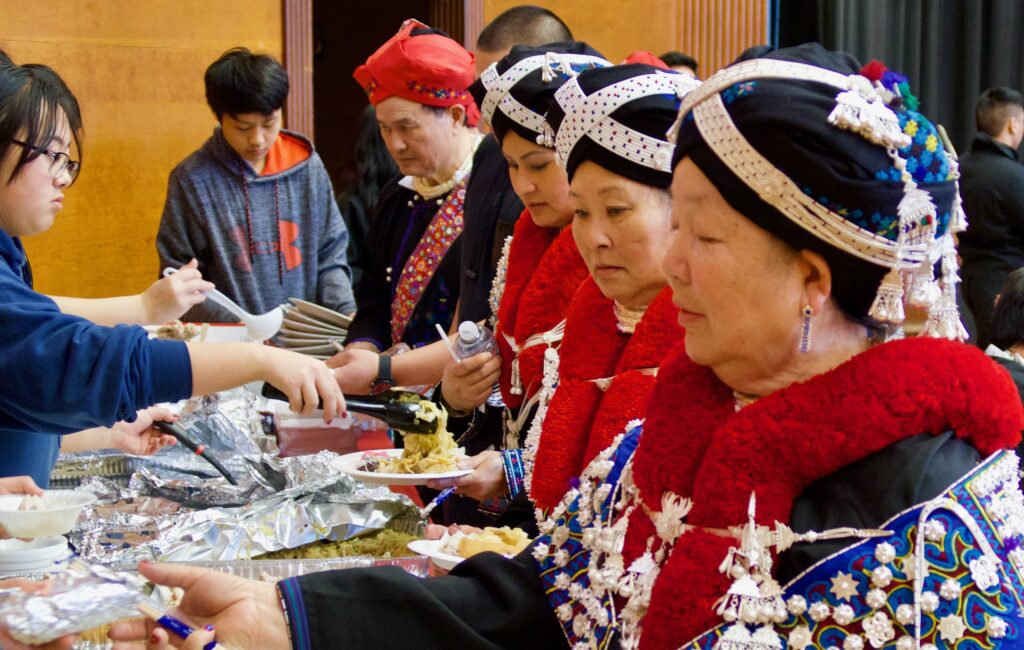

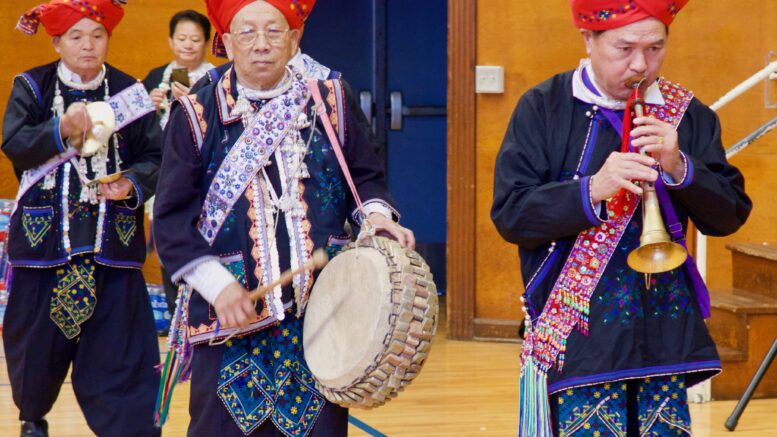
Be the first to comment on "The hidden thread"